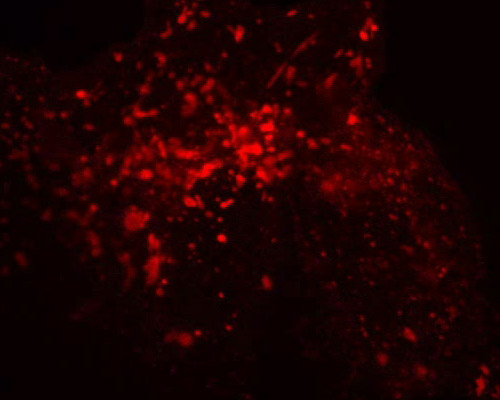Monkey Kidney Cells with mRuby-LAMP1

The main function of a lysosome is digestion. These microbodies break down fats, proteins, cellular waste products, carbs, and other macromolecules into simple compounds that are transported into the cytoplasm as new cell-building materials. To accomplish this, the lysosomes use around 40 various types of hydrolytic enzymes, all of which are manufactured in the endoplasmic reticulum and customized in the Golgi. Lysosomes are often formed from the Golgi apparatus' membrane, but in some instances, they steadily develop from late endosomes.
The lysosomes present in the African green monkey kidney fibroblast cells (CV-1 line) featured in the digital video sequence in this section were visualized with mRuby. A relatively bright red fluorescent protein, mRuby experiences peak excitation at 558 nanometers and peak emission at 605 nanometers. mRuby is a monomeric derivative of the tetrameric far-red fluorescent protein eqFP611.



